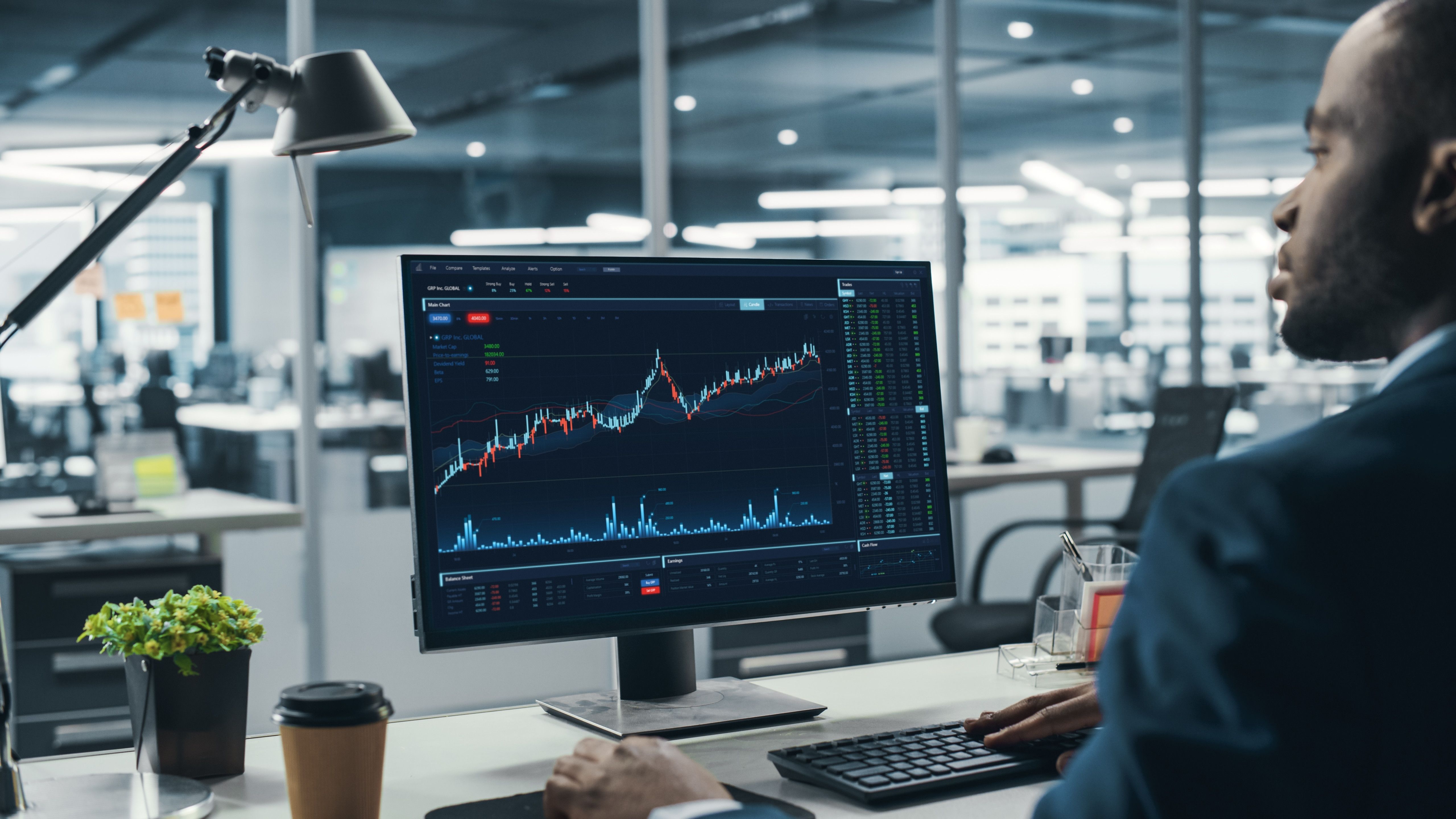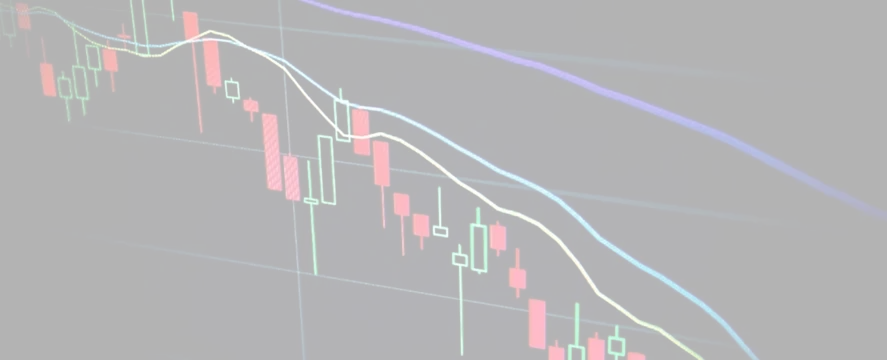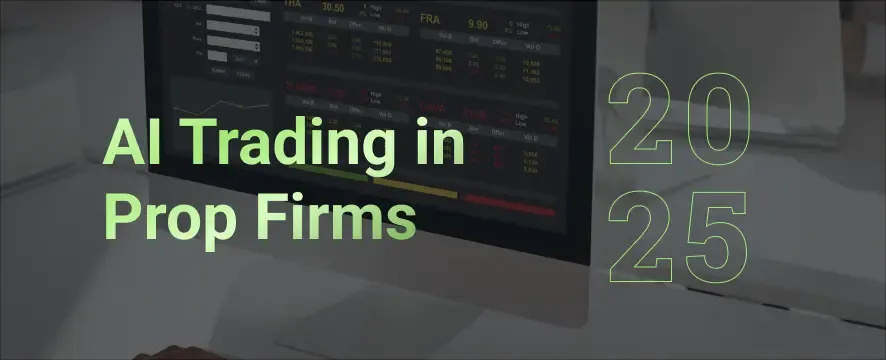
18 min read
Funded Trading Accounts Explained: Types, Benefits & How to Get One
A funded trading account gives you access to a firm’s capital to trade, share profits, and reduce personal risk.
10 min read
Share
In this article, we will discuss how to correctly backtest a forex trading strategy.

Trading in the foreign exchange market without proper preparation can be a bit like setting sail without checking the weather beforehand. Smart traders know that backtesting a trading strategy before risking real money can make all the difference and help eliminate what could be otherwise costly mistakes!
In this article, we will discuss the importance of backtesting and how it can transform promising trading ideas from theories into reliable strategies.
Anyone venturing into the forex market will soon discover that successful forex trading requires a lot more than just market intuition.
Backtesting is similar to flight simulation for traders - or walking before your run. It lets you practice (and fine-tune) your trading strategy without the risk of real-world consequences.
Modern trading platforms offer sophisticated tools for this very purpose, but understanding the basics makes all the difference.
Trading strategy validation starts with asking the right questions, which include the following:
What market conditions does the strategy target?
How will it handle unexpected events?
Is it sustainable long-term?
Will it work irrespective of the prevailing market conditions?
Rather than jumping straight into complex technical indicators, it's better to begin with clear objectives and realistic expectations when backtesting trading strategies.
Success occurs when historical market movements meet strategic thinking. By examining how trading ideas would have performed in past markets, traders gain valuable insights without risking actual funds.
Backtesting bridges the gap between theoretical knowledge and practical application.
Backtesting is akin to a dress rehearsal for your trading strategy, allowing you to test your ideas against historical data before committing real money. This process is crucial for identifying potential flaws, optimizing risk management parameters, and building confidence in your trading decisions.
In the fast-paced world of forex trading, backtesting offers a safe environment to simulate how your strategy would have performed under various market conditions. By analyzing historical data, you can see how your strategy handles different time frames, currency pairs, and market volatility. This not only helps in refining your approach but also in avoiding costly mistakes and significant losses.
Given the high volatility and liquidity of the forex market, backtesting becomes even more important. Forex traders need to adapt quickly to changing market conditions, and backtesting provides the insights necessary to make informed decisions and stay ahead of the curve.
Different types of strategies suit different trading personalities. Some traders thrive on quick, momentum-based moves, while others prefer the steady approach of trend following.
Picking the right strategy depends on personal preferences, lifestyle, availability, and goals.
The market rewards traders who match their strategies to their natural tendencies. A strategy that works brilliantly for one trader might spell disaster for another. Consider how a night owl would struggle with an early morning trading routine, for example.
Also, different traders have different risk tolerance, which is another important consideration.
Modern trading platforms offer endless possibilities for strategy development. From basic trend-following approaches to complex multi-currency systems, each strategy needs thorough testing before deployment. The key lies not in finding the most sophisticated approach, but in discovering what works consistently.
Quality historical market data forms the foundation of reliable backtesting. Think of it like building a house - without solid ground beneath, even the best design falls short. Historical market data should cover different conditions, from calm periods to volatile storms.
Traders often overlook the importance of clean data. Gaps, spikes, and incorrect prices can skew testing results dramatically. Therefore, it's important to verify your data sources carefully, understanding that quality matters more than quantity when it comes to historical information.
Some trading platforms provide built-in historical data, while others require external sources. The trick lies in finding reliable data that matches your trading timeframe. Weekly strategies need different data depth than five-minute charts.
Modern traders face a choice between manual and automated backtesting. Manual testing offers deeper insight into market behavior but demands more time. Automated systems process more data quickly but might miss nuanced market conditions.
Trading platforms have evolved significantly over recent years. Tools that once cost thousands now come built into many platforms. Free forex backtesting software opens doors for newer traders, though paid options often provide more robust features.
Choosing between manual and automated approaches often depends on strategy complexity. Simple systems might work well with manual testing, while strategies using multiple indicators benefit from automation’s precision.
Selecting the right backtesting software is a pivotal step in effective backtesting. With a plethora of options available, ranging from manual tools to sophisticated automated platforms, the choice depends on your specific needs, trading strategy, and level of expertise.
Popular backtesting software options include MetaTrader, TradingView, and Forex Tester. These platforms offer a variety of features, such as access to historical data, a wide range of technical indicators, and automated trading capabilities.
When choosing backtesting software, consider the following factors:
The software should be intuitive and user-friendly.
Ensure the software provides reliable and accurate historical data.
Look for a platform that offers a comprehensive set of technical indicators to support your strategy development.
The ability to automate trading can streamline the backtesting process and handle complex strategies.
The software should include tools to help you optimize your risk management approach.
By carefully selecting the right backtesting software, you can enhance the accuracy and efficiency of your backtesting efforts.
Success in backtesting requires more than running numbers through a system. Smart traders create detailed testing plans, considering everything from position sizing to market conditions. They understand that thorough testing reveals both strengths and weaknesses in their trading system.
Parameters define how strategies interact with markets. Entry rules, stop losses, and profit targets need careful consideration. Just as a chef adjusts recipes through testing, traders refine their parameters through systematic experimentation.
Risk management deserves special attention during testing. Many brilliant strategies failed because position sizing or risk controls proved inadequate in real conditions. Virtual funds let traders experiment safely while learning these crucial lessons.
Creating an effective backtesting environment involves several key steps:
Choosing a Backtesting Software: Select a platform that aligns with your trading needs and expertise level.
Collecting Historical Data: Gather reliable and accurate historical data for the currency pairs and time frames you plan to test.
Defining Your Trading Strategy: Clearly outline your trading strategy, including entry and exit points, position sizing, and risk management parameters.
Configuring the Software: Set up the software to reflect your trading strategy and risk management rules.
Running the Backtest: Execute the backtest using the historical data and analyze the results.
To ensure the best outcomes, follow these best practices:
Use High-Quality Historical Data: Accurate data is crucial for reliable backtest results.
Define Clear Trading Rules: Avoid ambiguity by setting precise trading rules.
Incorporate Risk Management: Use risk management parameters to optimize performance and protect your capital.
Regularly Update and Refine: Continuously improve your trading strategy based on backtest results.
By setting up a robust backtesting environment, you can systematically test and refine your trading strategies.
As traders gain experience, they often discover that markets behave differently across timeframes. A strategy showing promise on daily charts might struggle with intraday volatility. Advanced testing considers these relationships, leading to more robust trading approaches.
Market conditions change constantly, requiring strategies to adapt. Smart traders test their forex strategies across different market environments, from trending to ranging periods. This comprehensive approach builds confidence in strategy performance.
The most successful traders understand that backtesting never truly ends. They continuously refine their approaches, adapting to changing market conditions while maintaining their core principles.
Optimization bias presents a danger during testing. Traders sometimes adjust parameters until historical results look perfect, creating strategies that fail in live trading. Avoiding this trap requires discipline and realistic expectations, especially when conducting manual backtesting.
Manual backtesting, although labor-intensive and potentially error-prone, allows traders to gain insights into strategy performance and market behavior by actively analyzing historical price charts and applying their trading methods.
Many traders rush through testing, eager to start trading real money. This impatience often leads to costly mistakes. Taking time during the testing phase saves both money and emotional stress later.
Trading costs impact strategy performance significantly. Smart traders include spreads, commissions, and slippage in their backtests. These seemingly small factors can make the difference between profit and loss.
Moving from backtesting to live trading requires careful planning. Demo accounts provide a useful transition phase, letting traders practice their strategies in real time without risk. This step helps bridge the gap between theory and practice in financial markets.
Successfully tested strategies still need monitoring in live markets. Financial markets evolve constantly, and strategies must adapt accordingly. Regular review sessions help traders stay aligned with changing conditions.
Paper trading offers another valuable transition tool. Trading with virtual funds while following live markets helps build confidence before risking real capital.
Interpreting backtest results is a critical step in the backtesting process, providing valuable insights into the performance of your trading strategy.
When evaluating backtest results, consider the following factors:
Profitability: Assess the overall profitability, including the win-loss ratio and average return per trade.
Risk Management: Evaluate the effectiveness of your risk management parameters, such as maximum drawdown and risk-reward ratio.
Consistency: Look at the consistency of your strategy’s performance over time and its ability to adapt to changing market conditions.
Robustness: Determine the robustness of your strategy by testing it under different market conditions and time frames.
By effectively interpreting backtest results, you can identify areas for improvement, refine your trading strategies, and optimize your risk management parameters. This process ultimately leads to better trading performance and more informed decision-making.
Even perfectly tested strategies need good risk management. Position sizing rules protect accounts during inevitable losing streaks.
Smart traders never risk more than they can afford to lose on any single trade, which is a hallmark of a successful trading strategy, while stop losses protect capital during unexpected market moves.
Backtesting helps traders understand where these protective orders work best. The goal isn’t avoiding all losses but managing them effectively.
Portfolio-level risk management considers how different strategies interact. Diversification across approaches can smooth overall returns, but only when properly tested and implemented.
Markets never stand still, and neither should your forex strategy. Regular strategy reviews help identify areas needing adjustment. This ongoing process keeps trading approaches relevant as markets evolve.
Forward testing validates backtesting results in current market conditions. This extra step helps traders spot potential problems before they impact real trading. Think of it as a final check before going live.
Success in forex trading requires patience, discipline, and continuous learning. Thorough backtesting builds confidence while minimizing costly mistakes. Remember, the goal isn’t perfect predictions but consistent, profitable trading over time.

18 min read
A funded trading account gives you access to a firm’s capital to trade, share profits, and reduce personal risk.

12 min read
Yes, some prop firms allow news trading. This 2025 guide shows which firms permit it, their rules, and how traders can benefit.

10 min read
A funded trader uses a prop firm’s capital instead of their own. Learn how funded accounts work, profit splits, and how to qualify.

13 min read
To become a funded trader in 2025, you must pass prop firm challenges by mastering strategy, risk control, and trading rules.

9 min read
Discover effective AI trading strategies for prop firms to enhance your profits. Learn practical tips to navigate the market successfully. Read more!
Get an insight from other users about SeacrestFunded and their experiences. 131K+ members and counting

Get instant access to weekly newsletter.